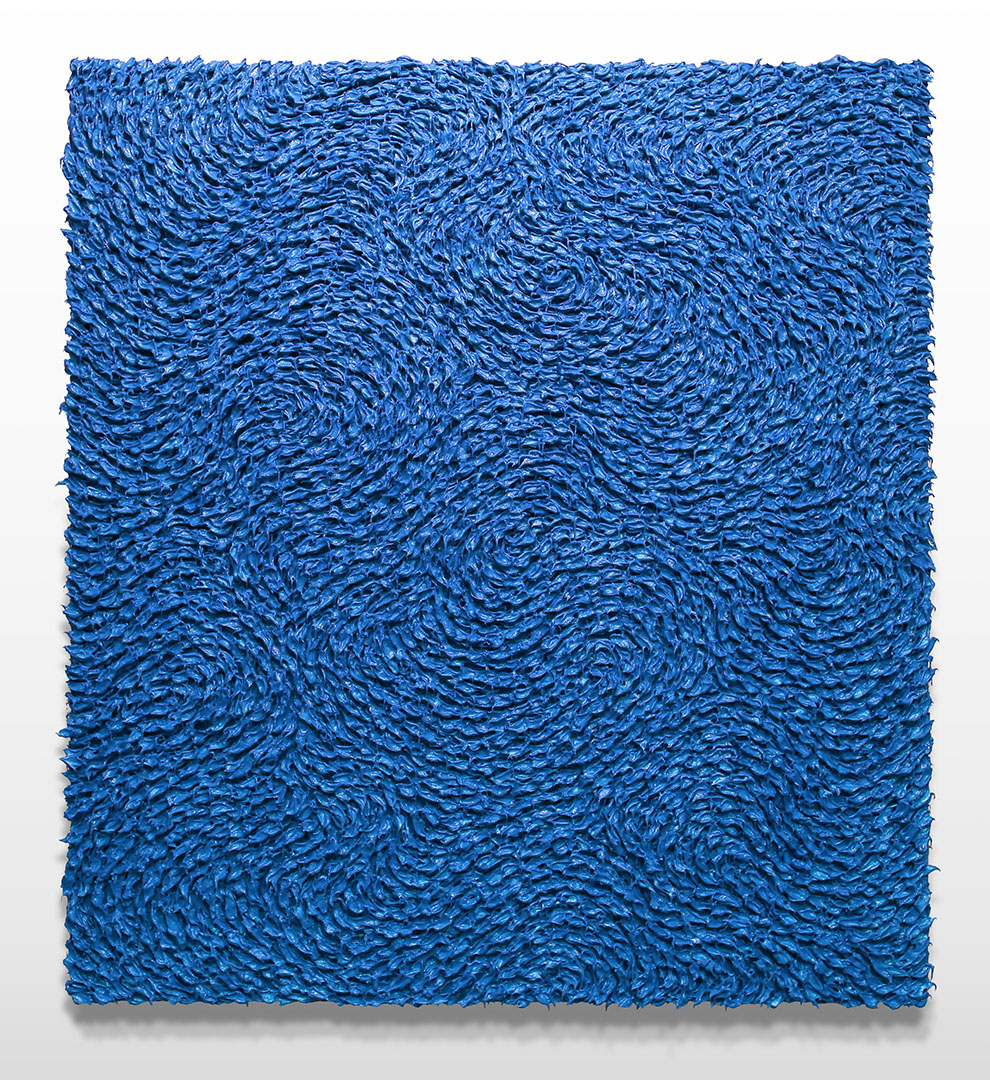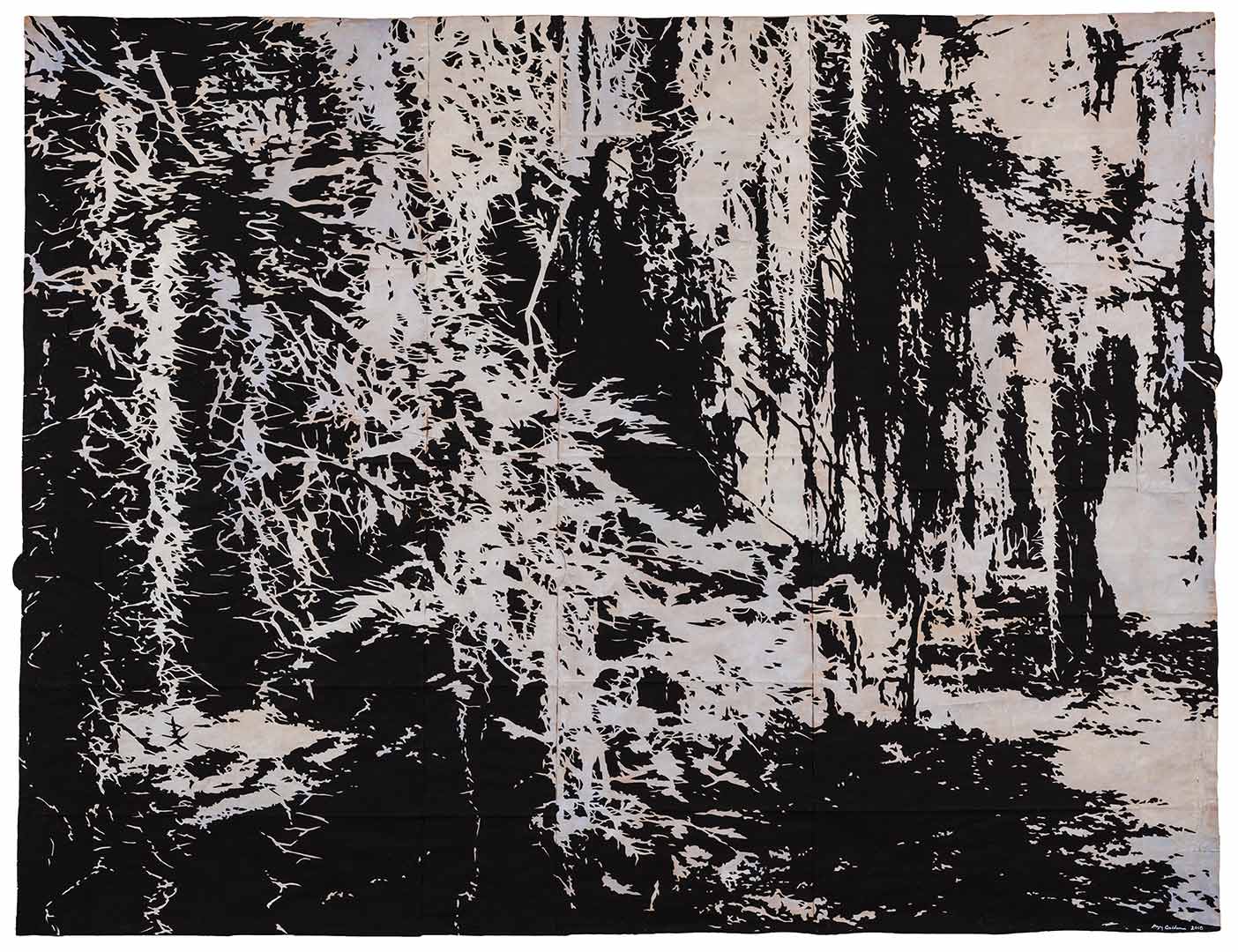image: Robert Sagerman 15,873, 2018, oil on canvas, 60 x 54 inches
How does Cris Worley have such beautiful shows one right after another? Not pretty, which is just surface art, but rather beauty that takes into account the good and complicated. Not kitsch, because the art in these shows has a high level of thought and process. Beauty has been making a come back because the understanding of the complexity of the idea has been blossoming. Thankfully Cris Worley Fine Arts isn’t afraid to bring on the beauty by displaying artist after artist that explore this fundamental idea.

Robert Sagerman creates work through a rigorous system which results in patterns that seem to flow like thick liquid oils across his paintings. Each thick stroke of paint is counted. Every color he uses is tested first. He is a planner, but an artist with a system doesn’t always create beautiful objects. Paintings of Jonathan Lasker are not beautiful, because he isn’t interested in exploring this idea. Don’t get me wrong, I love Lasker’s paintings but his system of working comes to different conclusions than the beautiful. Sagerman, on the other hand, reaches a level of beauty through his repetition. Those globs of paint are a little gross taken individually, yet when Sagerman places each one into a system, the beauty of those marks emerge out of the something that might repulse us. Reflect upon the beauty of a perfect rose. The flower blooms best when planted with manure. Sagerman builds up his surface one stroke at a time from the globs to glorious brush strokes.

Some of Sagerman’s paintings show a gradient of color that transitions across the work. If this feels like familiar territory for Cris Worley Fine Arts you might have seen Kristen Cliburn’s paintings recently. She allows the color to fade across her canvas in the same way a multicolored light might change from one color to the next. The lines between one dominant color to another gets blurred. Sagerman’s brush strokes make the transition of color a little more rough, but no less effective. All the paintings had patterns that moved around like eddies, but the solid color pieces seem to demonstrate this effect the best. Swirls of implied lines kept you inside the boundaries of the painting.


